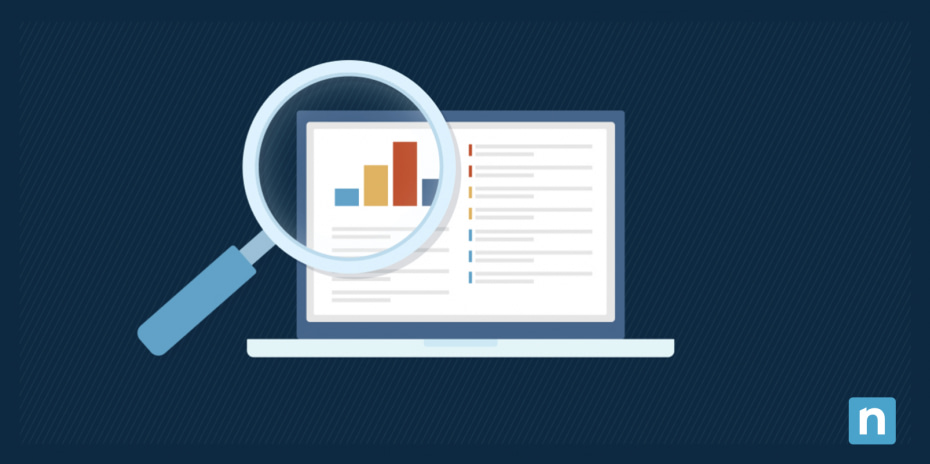Businesses have a growing number of endpoints in their IT environments. Endpoints give end users tools to increase their productivity, get quick access to information they need, and connect with other fellow end users. However, there are risks that come with having these devices, such as cyberattacks and losing money due to endpoint maintenance issues.
Also, according to a survey of 308 IT decision-makers, “Only 30% said they are confident in their ability to see more than 85% of their endpoints.” That number is very alarming, and it shows how endpoint visibility needs to be a priority in more organizations across the board.
What is endpoint visibility?
Endpoint visibility is the ability to view, monitor, and manage all the endpoints in your IT environment. This is accomplished through the use of endpoint management software. The ability to track your endpoints also enables you to take further needed action, such as securing endpoints or updating them for better performance.
Why endpoint visibility is important for modern businesses
Endpoint visibility gives organizations the ability to manage their devices effectively. There are three major reasons why endpoint visibility is crucial in an IT environment:
Security
Being able to see all your endpoints is extremely helpful from a security perspective. You know all the components you’re responsible for, so you know what you have to protect. Without that knowledge, you’re taking a guesswork approach to endpoint security. You have no way of knowing whether all the devices that are connected to the organization are accounted for and secured. If you can’t see it, you can’t secure it.
Cost
If you know what devices you have, you know what devices you have to manage, their health and performance, and how heavily they’re used. Endpoint visibility helps you know when to retire old endpoints, when to add new ones, identify low-performing devices, and improve them rather than replace them.
Endpoint visibility also provides you with data and information about what’s going on in the system. This means you can monitor processes, check services, see what software is installed, and remove bad programs or stop bad services.
Support
Let’s say an end user calls in and states that they have a problem with their endpoint. If you don’t know what computer they have and know nothing about it, it takes a lot of effort to go in and find the information you need. With endpoint visibility, all that information is ready and provided for you, so it makes you very efficient in supporting your end users. It will contribute to better help desk operations.
3 best practices for endpoint visibility
Endpoint visibility can seem overwhelming, especially if you lack it in your organization and you’re just starting to make the transition. To give you some guidance, here are three of the best practices for endpoint visibility:
1. Track all devices
This sounds simple, but it is the foundation for successfully implementing full endpoint visibility in your IT environment. Plan out how you will locate and identify all endpoints within your organization. Then, set up a tracking or monitoring system on each device that sends real-time data to your software platform. This gives you visibility into the health and performance of each of your endpoints.
Monitoring and managing your endpoints when you have full endpoint visibility is a lot easier because you don’t have to speculate when issues arise. All the device information is made available to you, so instead of wasting time trying to find what may have gone wrong or malfunctioned, the data will provide the answer.
2. Consistently update and patch systems and software
Updates and patches are essential to ensuring that your endpoints continue to work effectively. Endpoint visibility helps you to see the performance of your endpoints 24/7 so you can determine whether they are functioning optimally.
Patching and updating your endpoints is also an important task for endpoint security. You need to make sure that your organization’s endpoints are protected against cyberattacks and threat actors so your end users remain safe and secure.
3. Quickly address endpoint issues
Endpoint visibility can give you immediate knowledge when something goes wrong, even if the end user doesn’t detect anything. When a problem is detected, a best practice is to remediate the issue as soon as you can. This helps to prevent an issue from escalating and causing further damage to an endpoint.
Monitoring and managing all your devices will also inform you of whether your endpoints are in good or bad health. You can know when an endpoint has one issue and functions well when it’s resolved, or you can see if an endpoint has many
How to achieve endpoint visibility & control it
Endpoint visibility is crucial to the health and security of your organization’s technology. It also allows you to support your end users better. Because of its importance, you want to ensure that it’s set up correctly and provides you with the critical endpoint data you need.
One of the best ways to achieve endpoint visibility is through the use of endpoint management software. This type of software is specifically designed to monitor and manage all endpoints that are connected to your business’s network. It also gives you the ability to access your endpoints so you can apply endpoint security, install applications on devices, change configurations, provide support, and more.
It’s also helpful if you can find an endpoint management solution that integrates or includes other IT management tools and features that you need. The more applications and software your IT team has to handle, the more confusing and stressful it may be to support the health and security of your endpoints. Consolidating your tools into a unified tool stack will help your organization to avoid software sprawl.
Navigate the digital landscape with confidence by selecting the optimal UEM solution tailored to your needs.









